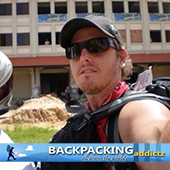The Syrian Arab Republic has recently been given a new face with claims by the U.S. Government in Obama’s letter to Congress as supporting terrorist activities by supplying weapons to Hezbollah. Overshadowed by the excessive media on other countries in the Middle Eastern world, the world, for the most part, is provided one side of the story, and, as such, are incredulous and gullible. While politically, Syria seems at odds, the old culture has so much more to educate and show the world about the past and the future. The Tourism Board may somewhat glamorize Syria, but it is rather glamorous. Either way, the people are a genuine testimony that Syria is a land of peace, beauty, and cheer. Jerry Seinfeld and Paula Abdul…yes, they are cheerful, beautiful, and Syrian.
The Cradle of Civilization, Syria is a window to the world’s past. Damascus is the oldest city in the world with continuous civilizations of present inhabitants. This is where scriptures and arithmetic were invented. The scribes of the city of Ugarit are manifest of the 14th century BC cuneiform alphabet origins of our modern alphabet that are of the same system.Syria holds the answer to great mysteries and simple questions as, why Arab men hold hands. Might you be asking, holding hands is a show of manly affection amongst men, as is accepted in Arab culture. More practically, they just navigate better in crowded spaces that way. That said, homosexuality is not allowed by the Islam faith, so 99% of the time, these caressing hommes are straight as a ruler.
GEOGRAPHY
Syria (35 00 N, 38 00 E) is 185,180 km2 of are of diverse geo features. The terrain is primarily semiarid and desert plateaus in the east and double mountain belt in the west, with a narrow coastal plain. The Mt. Hermon is a special geo feature of the country being the tallest at 2,814 metres tall, but more note-taking is its lowest point near Lake Tiberias that is -200 metres below sea level, among the lowest in the world. Soil is amazing herein bearing a quarter of the land territory as arable land.
CLIMATE
The climate contributing to the wonderful fertility of the soil is perplexingly hot and dry, even desert in some places, but the temperatures, as a whole, are tolerable. During the sunny summers, which is from June through August, the heat ranges from 21-32 °C, while rainy winters from December to February are 10- 21 °C. Snow or sleet occasionally hits Syria in Damascus.
PEOPLE
This gentle diversity also exists in the stunningly beautiful faces of the Syrians brought about by a long cultural history. Syria numbers 22,198,110 million of a mostly Arab population, 95% of the total, not including Syrians outside the homeland, as in Brazil and Argentina which number millions also. This is also a nation where Kurds, Armenians, Circassians, and Turkmen have long settled.
LANGUAGE
ARABIC, thus is the official language. while a few other languages are widely spoken and understood in some regions such as KURDISH in the north, TURKISH near the borders, ARMENIAN in Aleppo, and ARAMAIC, the country’s native language prior to Christian and Arab advent, in some homes in Damascus. FRENCH and ENGLISH are the state’s foreign languages and are understood by a sizeable populace.
RELIGION
Saladin, a celebrated Muslim figure, is the first Ayyubid Sultan of Syria, whose body now lays in one of its mosques. He is a total devout and adherent to Sunni Islam, as are most of the people here. As an Islamic state, Syrians are chiefly Muslims, comprising 74% of Sunnis, Druze, and other branches thereof, as they have been for centuries. In fact, Christian denominations form only 16% who belong to high socio-economic status, and Jews, 10%. The first organized Christian church is in Antioch, in ancient Syria, established by the Apostle Paul. Syria is historically significant this way to Christians. These religions coexist harmoniously the traveller will see with churches and mosques spread ubiquitously in the same places everywhere.
ATTRACTION
Damascus and Aleppo for instance as a very notable collection of these religious attractions. Whatever faith one has got going, appreciation for such places is, without doubt, universal. From the St. Ananias Church to the Ummayad Mosque, religion has never been this pretty especially in the old city of Damascus. Damascus makes for one marvellous destination because it is a continually inhabited city to this very day, and nowhere else, at that, for 6,000 years straight. The Ummayad Mosque is one of truly the most fascinating mosques in the world constructed in the 8th century by 10,000 workers, artists, and architects. This remarkable piece of Islamic art is also Saladin’s final resting place.
Here in Damascus is also the world’s oldest shopping mall– a souq 5,000 years hence. One of the only places in the world where unadulterated tradition meets present-day trade, as lively tradesmen sell centuries-old ice cream and flashing battery-operated g-string knickers, in this ancient place, no less. Trying as best to overlook men holding hands is a feat, so to Aleppo, Bosra, and Palmyra, which are, like Damascus, UNESCO World Heritage Sites to see less of this and more outstanding edifices. Palmyra, notably, is a famous and breathtaking view of what was at a time in the earth’s history, a big Roman city of the 1st century A.D. now ruins, but absolutely magical, nonetheless. But Palmyra is not so different a city.
It’s got temples like the Temple of Ba’al and that of Syrian goddesses Nike and Allat, amphitheatres, Senate, banquet halls, and a larger-than-life necropolis, which seems quite common in the ancient world, jazzed up with colonnaded streets and Corinthian details. The remnants of a large church in Syria were excavated very recently some few years ago. No visit to Turkey would be complete without experiencing Aleppo, capital of Islamic culture. Its medieval-style markets will take the traveller back some centuries ago when Aleppo was a Europe-Asia trade crossroads. The strength and structure of the unassailable citadel and basilicas of Aleppo also make one heck of a breath-taking encounter. It’s just unbelievable in so many aspects.
Apart from this, in the south of Aleppo is another such city, but much more antique, like 3rd millennium BC for crying out loud, the city of Ebla of a civilization and culture that rivals the early Mesopotamia and Egypt. Fifteen thousand cuneiform tablets dated 2250 BC were found right here revealing to the world a then unknown Eblaite language. Believe when I say, there should be more of this in Syria where it’s from, but hurry. Like the fate of some unkempt structures, the Qala’at Saladin (Castle of Saladin), east of Latakia, supposedly boasts of a magnificent military architecture. Sadly though, it is in the advanced stages of disintegration.
FOOD
As much of relics and such the traveller would unearth from a cradle of civilization as Syria, there is much left unsaid of the cuisine here. Nobody talks about Syrian food much. More than sure, the food in Syria is more popular than the country itself. Syrian cuisine is for the most part overshadowed by general cuisines of Arab or Levantine. However, Syrian cuisine is unique and is a fine version of Middle-Eastern cooking. The secret lies in the specific blend of spiceage and textures of Syrian food. Although it is comforting to know that dishes like kebab, falafel, hummus, tabbouleh, mutabbel and baklava are ubiquitous, Syrians pride in a breadth of culinary wonders to explain what European, Middle-Eastern, Mediterranean, Greek and South Asian fusion is like. One thing for sure, Syrian food is powerfully enticing with its colours, it would be the prettiest and most unforgettable food you’ll ever had. Trust, an invitation to a Syrian home is a foodie’s good news.
At least, try the manaeesh or Syrian plate pizza which is eaten by adding some spices, greens, bound by a squish of lemon, before rolling it up, and you’ll know what I mean. Meat is the main attraction of Syrian cuisine. In much the same way, wheat, barley, and cereals are critical in the basic make-up of Syrian cuisine. This is the basis for their specialty flat and round breads called khubz, as well as pastries. Lamb, on the other hand, is a party favourite as it is usually consumed on celebrations, but yoghurt, anytime. Dessert…Syrian dessert as I’ve come to know is either flaky and nutty, or rich and sweet. The kenafeh in the souqs are to die for. Yet the ultimate is this antique Syrian ice-cream recipe, the epitome of Syrian desserts, served at the Bakdash in Damascus.
As regards drinking, Islamic laws prohibit alcohol consumption, apart from its other mandates on food. Still some populations enjoy alcoholic drinks as arak and the local beer Al Shark. Like I said, Syrian people are fun people, take Paula Abdul. White coffee is a Syrian exclusive and a definite must-drink. Water, juice, and yoghurt are given the thumbs up. Tap water is mostly potable here in Syria, unlike in some oil-rich desert countries in the region, so take the liberty of asking just to be safe and certain. Regardless, bottled water is inexpensive at USD $0.50 or SP 15-25 for 1.5 litres. Problem solved.
Josh Boorman
Editor-in-chief
Backpacking Addictz
Twitter: @backpackaddictz
Backpacking Addictz is a website set up by backpackers for the use of backpackers. On this site you will find a lot of very valuable backpacking information surrounding different destinations and countries from around the world. Also very helpful backpacking tips and travel advice on planning a budget travel and backpacking adventure. You will also find an enthusiastic and insightful backpacking blog which is regularly updated with new posts and article.
Backpacking Addictz Travel eGuides are a fantastic, cheap and easy way to get hold of a vast amount of backpacking information prior to setting off on your backpacking adventure.







Leave A Response